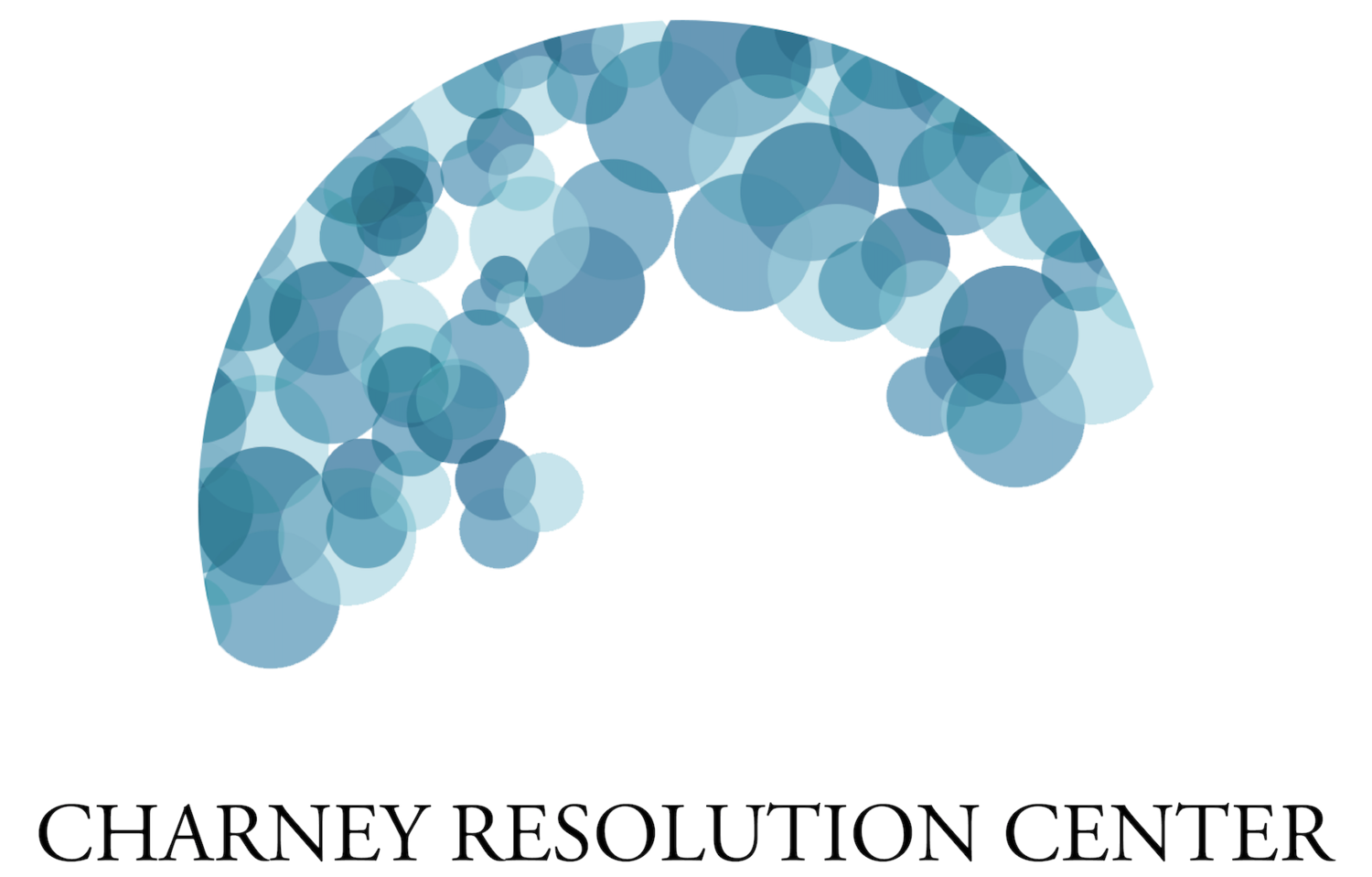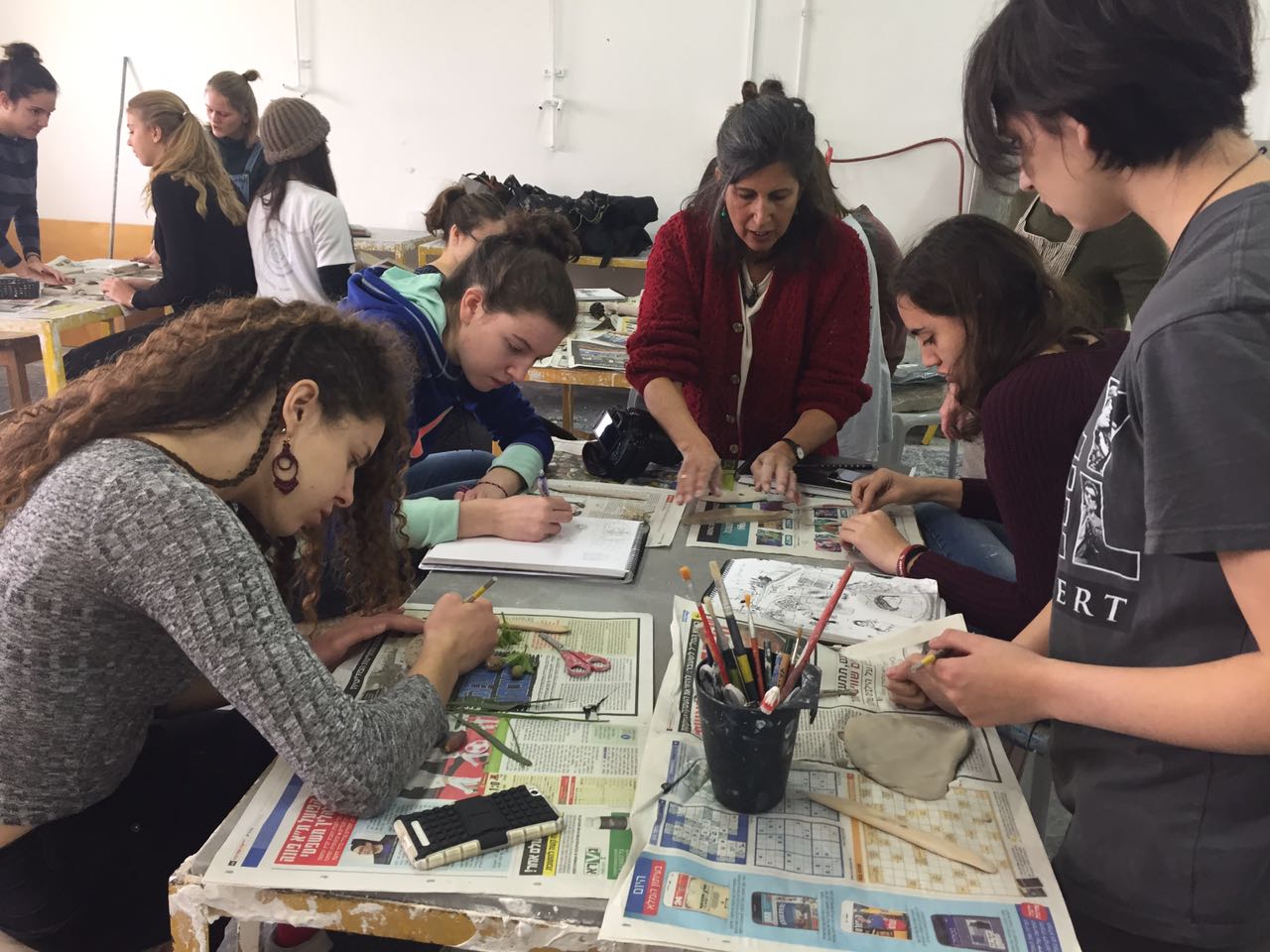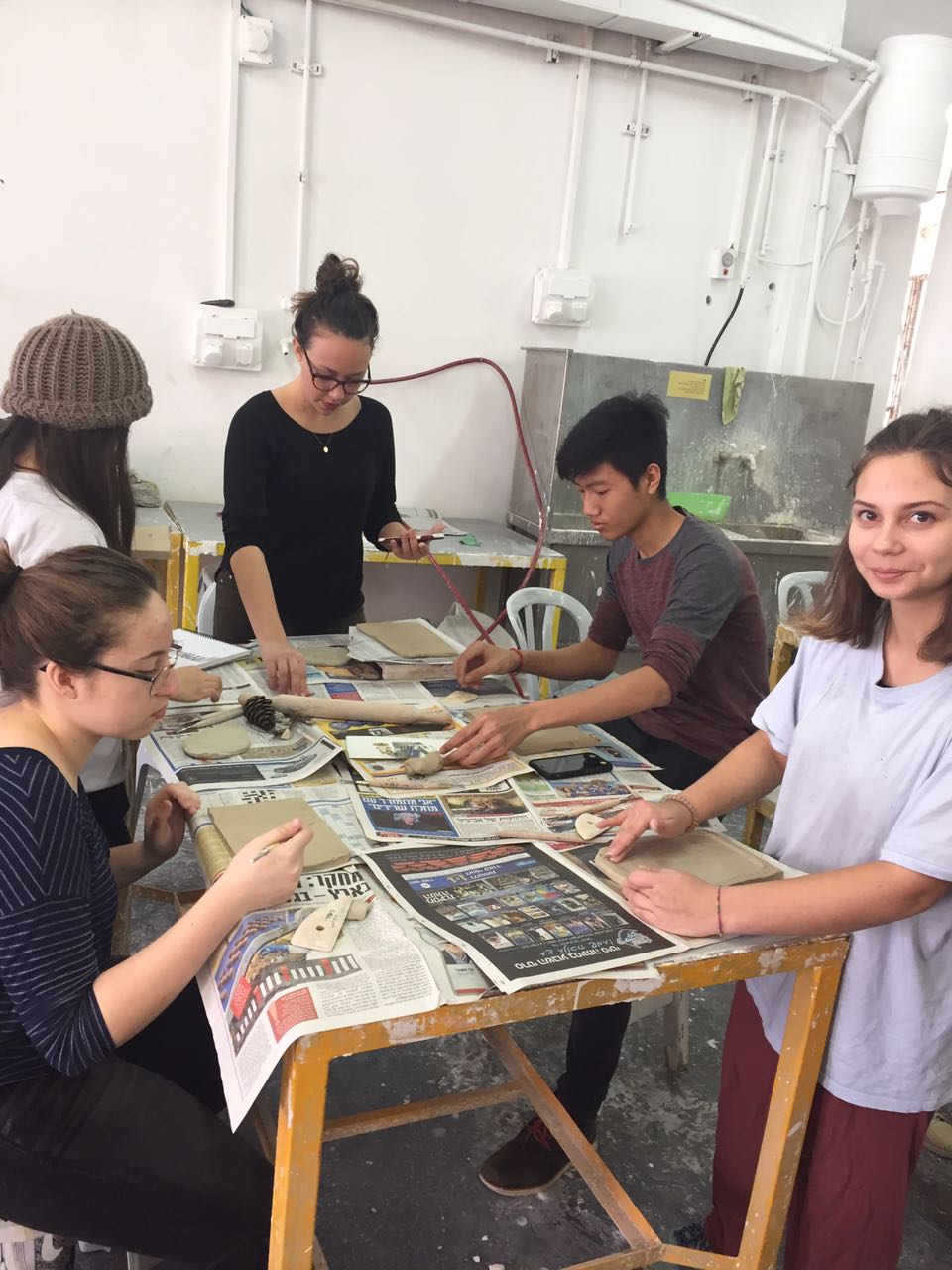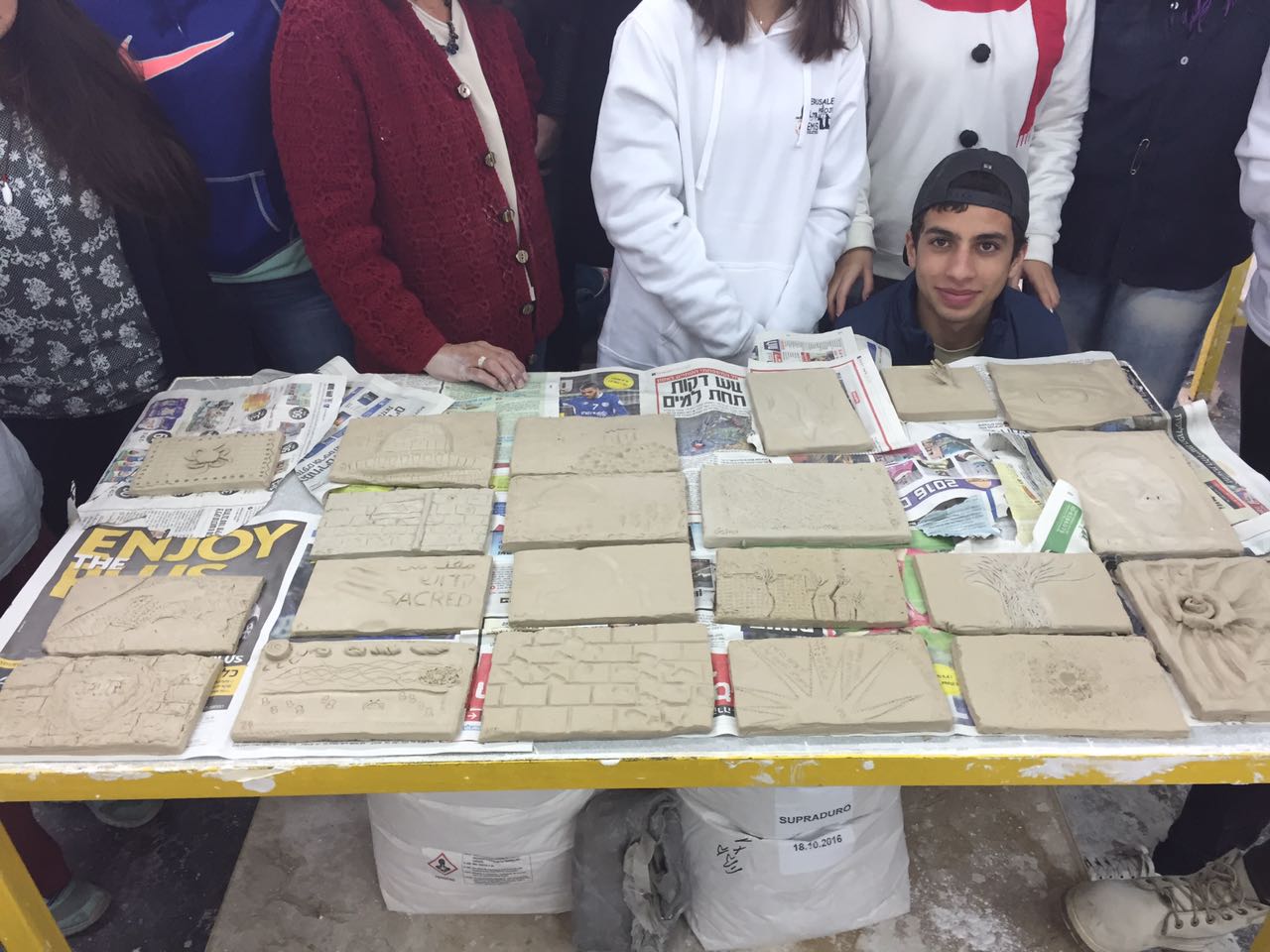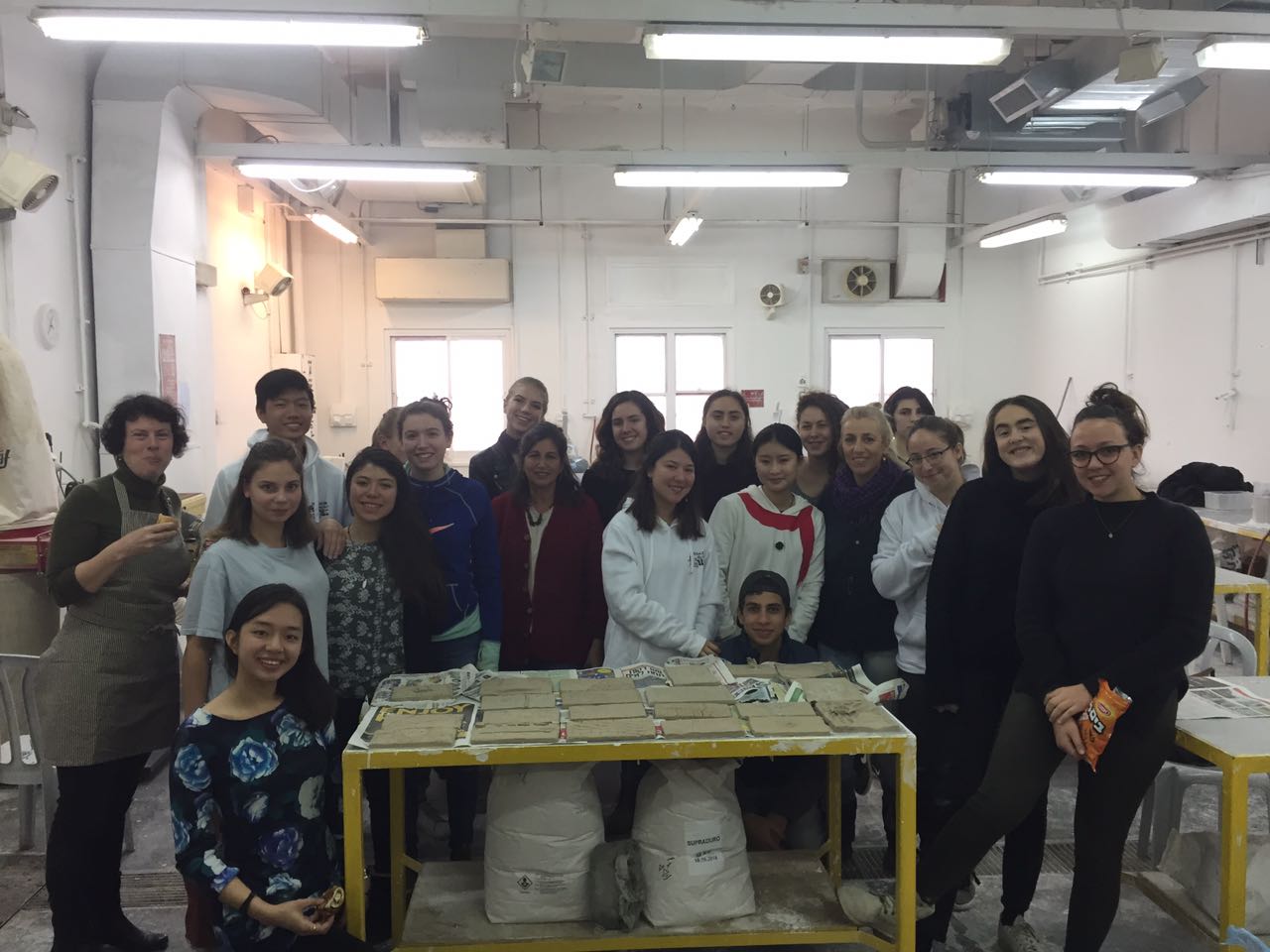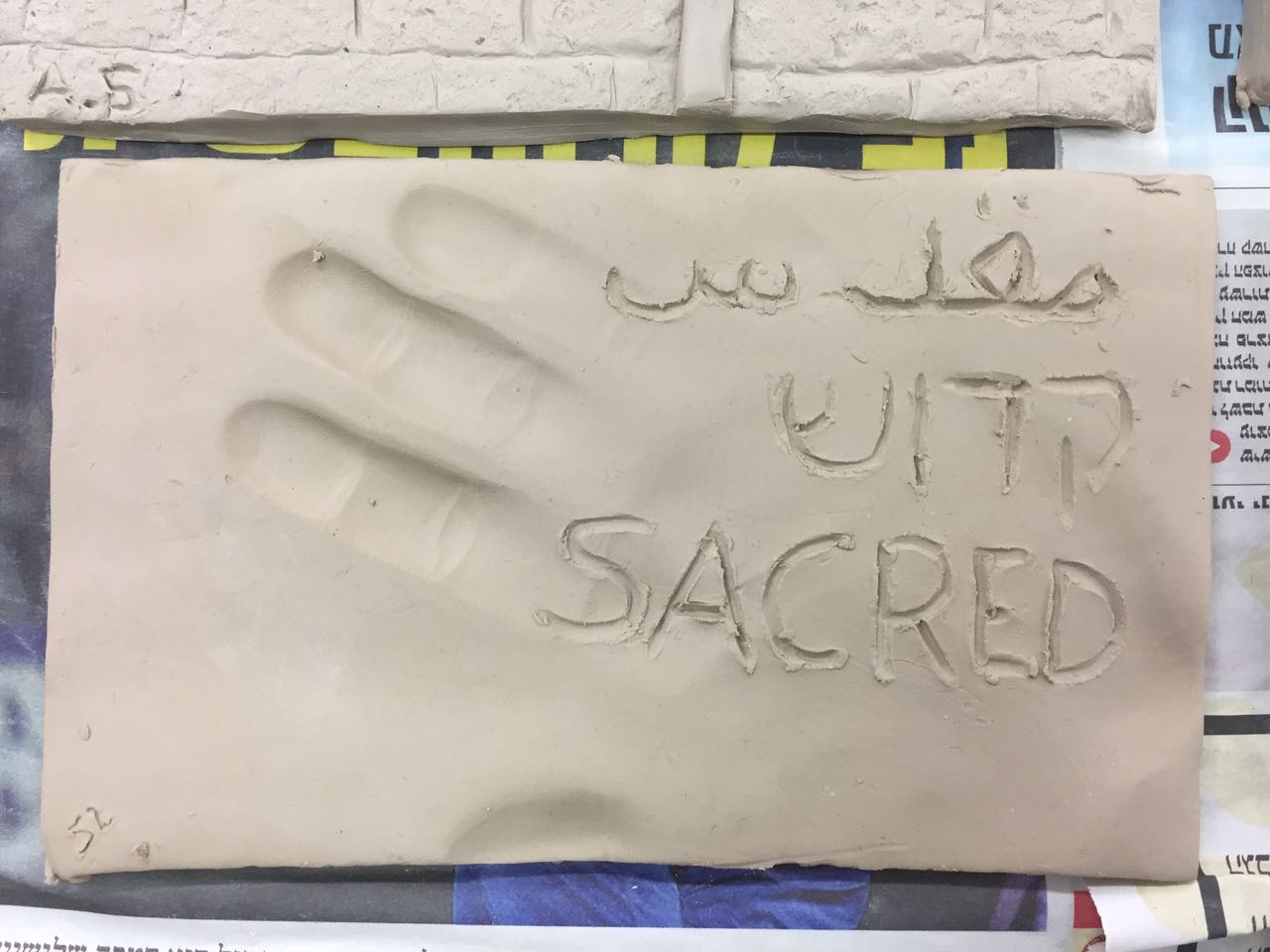By Emanuelle Slater and Adee Sella
Early on Tuesday morning, January 31st, the Visual Arts students of EMIS woke up for a jam-packed day ahead. With the aim of establishing an understanding of the connection between art and conflict, we were determined to, for a day, open our ears and minds to the perspectives of local artists. So, after eating breakfast and packing a lunch, we were off, headed towards the hills of Jerusalem, to the leading arts and design school in Israel, Bezalel University.
Upon arrival at Bezalel, we met with Eran Erlich, head of the ceramic department, outside of the campus for an overview of the university. There, we were joined by three students and the ceramics teacher of the Anglican International School of Jerusalem. Erlich explained to us the significance of the school’s location, which is in between the east and west of Jerusalem. As we stood there, in between what may seem to some as two separate worlds, Erlich described to us the dynamic reality of such a location and the effect it has on its students. Amidst the view from the hilltop, we were encouraged to pull inspiration to incorporate into a piece of our own.
We entered the ceramics department of Bezalel and immediately rolled up our sleeves to get to work. Each given a slab of clay to work with, we were instructed to create a tile that depicted a theme of Jerusalem and/or conflict. Each student began working with the materials given and experimenting with the tools available. Walking around the studio, it was incredible to see such diverse responses that each student had to the assignment. In later reflections, we discussed the symbolism of our activity, in working with the natural material we were given to create a work of art. We compared this idea with the concept of working with the land of Jerusalem, a land home to and loved by many, to create a sustainable solution. We all finished the workshop having succeeded to complete one tile each.
Next, we walked to the photography department of Bezalel where we met with Dor Guez, artist and head of the photography department. Guez briefed us on the photography program that Bezalel offers and began to explain his own fascination with the relationship between art and conflict. Although discussing conflict, the conversation was, in a sense, a breath of fresh air. When thinking about conflict in Jerusalem, our minds often rush to the Israeli-Palestinian conflict, or perhaps the religious-secular conflict. However, one of the quarters of the Old City, the Armenian one, is filled with a people who are all too familiar with conflict themselves. Guez told us all about his experience creating an exhibition inspired by Armenia, relating to the conflict the country has endure.
After speaking to Dor Guez, we took a bus to the Islamic Museum of Art in Jerusalem where we were able to see Guez’s exhibition, The Sick Man of Europe: The Composer, in person. We had a guided tour of the exhibition in which we acquired more knowledge about the exhibition and content itself, opposed to the context we received from the artist. After spending about an hour in the exhibit, absorbing all that we saw and interpreting the connection between conflict and art, it was time to leave, back to our hotel.
Throughout the day, we learned a lot a lot about the relationship of conflict and art both through listening to local artists’ experiences of using conflict as inspiration for their work, as well as working with our hands to do the same. Overall, we had such a good experience, gaining an opportunity to learn from new people and experiment with new mediums that we were formerly unfamiliar with.
